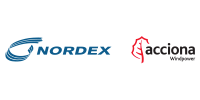09:00 - 10:30 Noise and visual impacts and you as the local resident
Environmental impacts & social acceptance

Room: C 2.2
This session will explore various technologies and methodologies to analyse and mitigate noise and visual impacts of wind farms. It will focus in particular on the capacity of the various technologies to foster acceptance among citizens living around a wind farm. Preventing negative impacts of wind farms on people means reducing noise and visual impact.
Chair and speakers will involve the audience by discussing the various examples of projects using these technologies. With the help of these examples, we will try to find out why certain technologies help to foster acceptance while others do not.
You attended this session?
Learning objectives
- Apply two new methodologies when analysing visual impact;
- Consider application of three approaches when analysing noise impacts;
- Explain ways of reducing noise and visual impact;
- Distinguish effective and less effective technologies for various kinds of wind power projects.

Presenter

Co-authors:
Moise Coulon (1) F Peter Longbottom (2)
(1) TNEI Services Ltd, NEWCASTLE UPON TYNE, United Kingdom (2) Visual Wind, Sheffield, United Kingdom
Presenter's biography
Biographies are supplied directly by presenters at WindEurope Summit 2016 and are published here uneditedMoise has nine years experience working in the environmental consultancy sector working on a wide range of projects relating to environmental noise assessments. He is in charge of IEC 61400-11 sound power measurements and post-construction wind farm compliance noise assessments at TNEI and has a high understanding of technical aspect of wind farm noise; inclusive of wind shear, cumulative noise impacts and long surveys mixing acoustic and environmental data.
Abstract
Continous noise monitoring to protect residents and improve yield
Introduction
Low-power computing, falling communication costs and the internet of things are now being applied to wind energy acoustics to enable long term noise monitoring. Using cloud computing, the entire process of data collection and analysis can be streamlined to help acousticians with the big data challenge that they are now facing.
Approach
See main body, use of new technology and will present findings from acoustic field measurements.
Main body of abstract
The high profile debate surrounding noise from operational wind turbines, in particular amplitude modulation, has been the subject of much attention among acoustic professionals worldwide, campaign groups and academics. While much of the debate has focused on assessment methodology, it is recognised by professionals that progress in mitigating wind farm noise will require accurate, high resolution and long term data. In recent years, the data requirements for amplitude modulation and tonal noise assessment have pushed wind farm noise monitoring into the arena of big data. But the challenges of long term monitoring are not only about big data. It is necessary to have systems which are suitable for installation at residential properties i.e. self-powered, fully automated, capable of sending data from remote locations, and able to store and analyse large volumes of high resolution acoustic data in real-time. Cloud platforms must also allow the blend of noise data with other data such as SCADA and meteorological mast data.
With new technology, monitoring campaigns of at least one year and even for the lifetime of a wind farm are now feasible and cost effective. Often, modern wind farms are designed with low noise mode operation (restrictions) based on cautious predictions and long term noise measurements can be used to identify where predictions were too cautious, and lead to yield improvement through optimisation of operational modes. Long term surveys also enable faster intervention following noise complaints. They allow the operator to understand the acoustic performance and see, for example, any degradation of acoustic performance over time, indicating potential requirements for maintenance.
Conclusion
But would residents want noise equipment in their property for the lifetime of a wind farm? Ongoing improvement in technology is reducing the size of equipment but in cases where agreement for long term residential deployment is not achievable, the use of calibrated proxy measurement locations (at the edge of the land controlled by the wind farm operator) may provide operators a way to demonstrate long term compliance. In this presentation, Visualwind and TNEI will discuss the advance in technology, present results and analysis from field data and discuss the future for long term monitoring.
Learning objectives
Delegates will learn from development in new technologies applied for acoustic of wind farms and they will learn how long term noise surveys may benefit local residents as well as operators. Finally, they will learn from field data measurements highlighting how in practice lifetime measurements can provide meaningful data and results.





Follow EWEA on: